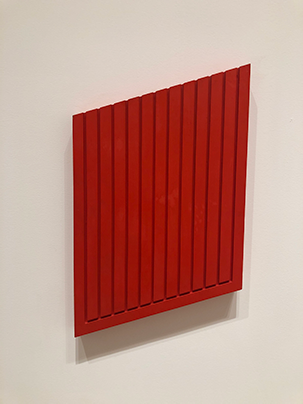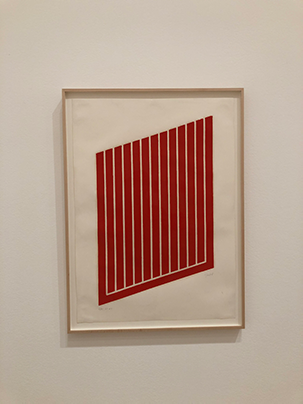Some not-quite-ready-for-Medium-post writings.
Thoughts

An image of my best self
Songmeanings.com
Passable Sushi
Product<>Process
Songmeanings.com
Songmeanings.com, a site where users post their interpretations of song lyrics, still has consistent contributors about 20 years after its launch despite not having changed much. It's poorly maintained, lacks modern features and functionality, and hardly works on mobile devices. But people still post their mixtapes (even though you can't play or even link to the songs) and song interpretations to this website. "Today's Top Lyrics" includes "WAP" (Cardi B, 2020), and "Dear Mama" (2Pac, 1995).
I still use this site as part of my music discovery journey to read others' contributions and post my thoughts about songs. Most of the songs I post about haven't been commented on in a decade or more, and most of the music I listen to is at least as old.
When I discover a band, my routine usually starts by Googling them and either reading about them on Wikipedia or browsing photos of them in Google Images. Afterward I'll move to Spotify and seek out a different album or song of theirs from the one I got pulled in by. While I'm in Spotify, I'll maybe refer to the "About" section for some more intel. Depending on how obsessed I am, I'll dig further online.
If I spend extended time with a song, I'll end up at songmeanings.com. I like how the different interpretations can open my eyes to aspects of a song I was not paying attention to. Sometimes I'll reply comment or upvote an interpretation, years after it's been added. Since the site doesn't let contributors know when a reply has been made to their comment, my replies hang there unseen.
And then I'll add my own thoughts and interpretations about songs. Since the songs I comment on are usually very old (likely from the 60s, 70s, or 80s), and the last comment added was from many years ago, I doubt anyone sees my thoughts. Which is what I really love about it, I love tossing these interpretations out there for nobody to see. It's not a personal act like a diary. There's a tacit invitation to read my thoughts: they are on this platform, I am sharing. It's a public site as my personal journal. The element of chance someone will see these thoughts is mildly exciting, but I really don't care if they do. And if someone were to reply to a comment of mine, I'll likely never know about it.
Passable Sushi
My wife and I have a sushi joint we order takeout from now and then. It's affordable, maybe slightly more expensive than what you would expect. But certainly not high end. The menu is comprised of your usual sushpects(!). It's better than gas station sushi, but not Jiro Dreams of Sushi Sushi: it's "passable sushi."
On the occasion we order from it we have a little ritual. We play the song "Passionate Kisses," written by Lucinda Williams, made popular in the nineties by Mary Chapin Carpenter. We think it's funny to replace the chorus with "Passable Sushi." Listen to the song, replace the chorus with, "Passable Sushi" and you'll totally not see the humor.
I've appreciated "Passionate Kisses" for being poppy, nostalgia inducing, and sushi prelud-ing, but never really thought about it too deeply. But the last time I had my salmon lovers entree, I was bit moved.
In the song, she lists off needs and desires, asking if it's an imposition to be asking for these things. They range from "a comfortable bed that won't hurt my back" to "a full house and a rock and roll band." Notable to me is where she repeatedly asks, "Shouldn't I have this?" And then in the climax of the song she declares, "give me what I deserve, 'cause it's my right."
"Shouldn't I have this?" or some form of that question sounds like the constant emotional background for needs and desires. When examined, the answers to this question can seem life altering: How much am I shaped by presuppositions about why I can't have things that I want? Assumptions about why I can't have build and ossify, contouring dreams, desires and expectations.
Of course, money and resources are a reason why I can't have "all of this and…" But this isn't "If I had a Million Dollars." (Not gonna link there, Google it later) This is about the sometimes faulty barriers between personal wanting and not having it. What is it I really want, why, and why can't I have it? What I want and why I can't have it are potent evaluations I find myself making a lot.
Process<>Product
In her book Architectural Intelligence, Molly Wright Steenson details the use of the word "architect" by technologists to describe their work. "Architect" is an analogy to actual architects who model and plan physical structures, but rarely construct them. Following this, UX is about planning: there is nothing tangible (virtually) in the product that the UX architect has an immediate relationship to, unless they are also the developer. UX's presence may be felt, but it is not concretely apparent like the pixel that was placed there by the developer.
In the construction of functional things, where there's planning there's a process. Sure, things can be built without either, but the product output is vulnerable to the conditions around it. The original intention, if there is one, is de-prioritized and threatened.
The product/process relationship floated into my consciousness when I saw Donald Judd's 2020 exhibition at MoMA. The exhibit featured some of his drawings where he planned his sculptures. Given the nature of his sculpture and installation, much of his work began with modeling and planning. He was pretty interested in architecture after all, and known to be tremendously particular. I can't imagine him walking into a studio and free-form building (but I can't deny that he may have done that at times).
In the retrospective was a piece from 1968, "Untitled (7L)," where Judd created a wood sculpture that he later decided should be a wood block for a print. Across from it in the gallery was the print he made from it. Where he had a final product (a wood sculpture), it then became the process (a wood block for a print).
In the gallery at MoMA, the woodblock and the print were hung on opposite walls of the gallery facing each other. It gave me the experience of looking through both ends of the process and product and seeing the same thing. Whereas one may usually see the process at one end and the finished product at the other (and vice versa), process and product here were indistinguishable. The work was like a trick or paradox in making a planned product without a process.


After some research, I discovered "Untitled (7L)" was an anomaly from other the wood sculptures he made at the time: it was actually always going to be a wood block for a print. But, he had several pieces preceding it in the early 60s (not in the retrospective) that were actually what I describe, final products as planning processes. Also, they were blue.